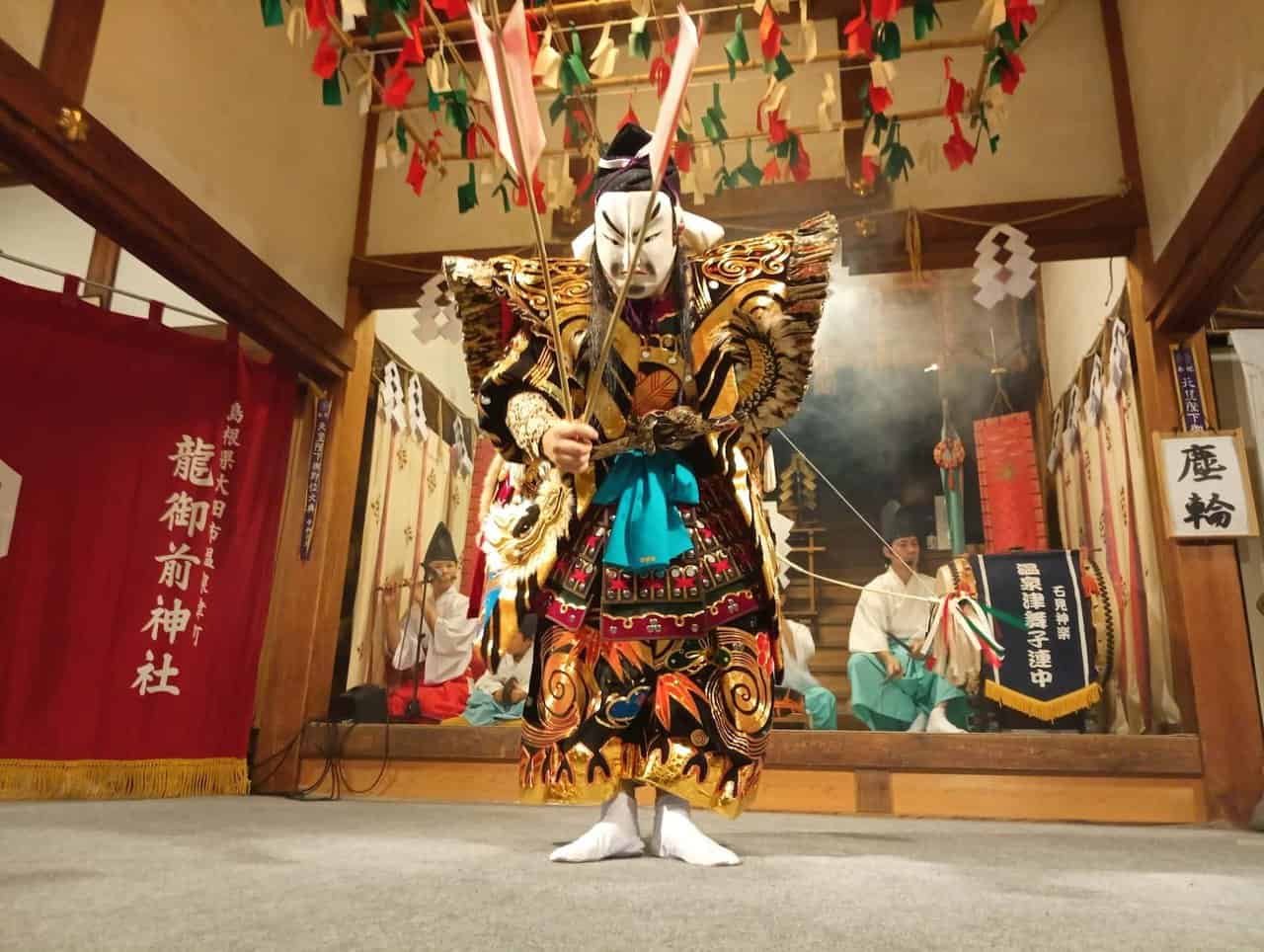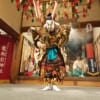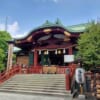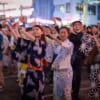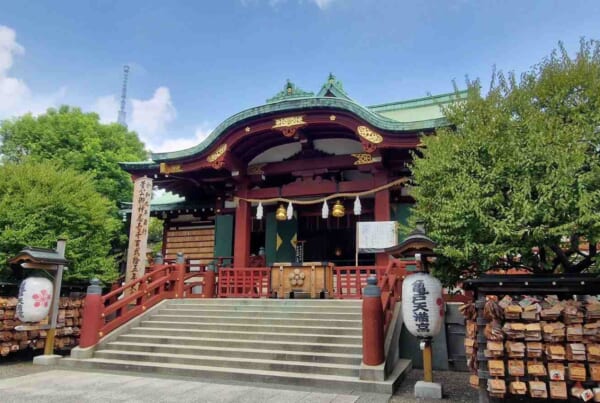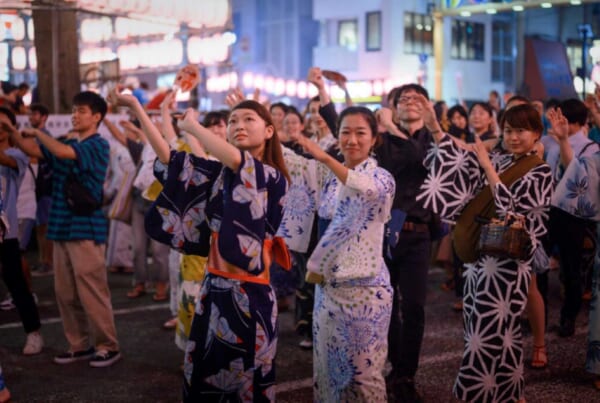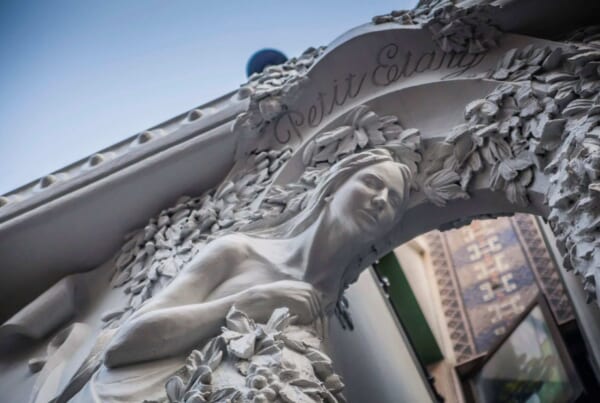I think it was the moment Orochi arrived. A phantasmagorical rendering of the eight-headed, eight-tailed serpent from Shinto myth, cavorting on the stage in wild and elliptical patterns, one of his papier-mâché heads thudding to the floor, a tubular tail whipping up gusts of wind. Yes, that was the moment I knew that kagura theater (神楽) was just a little bit special.
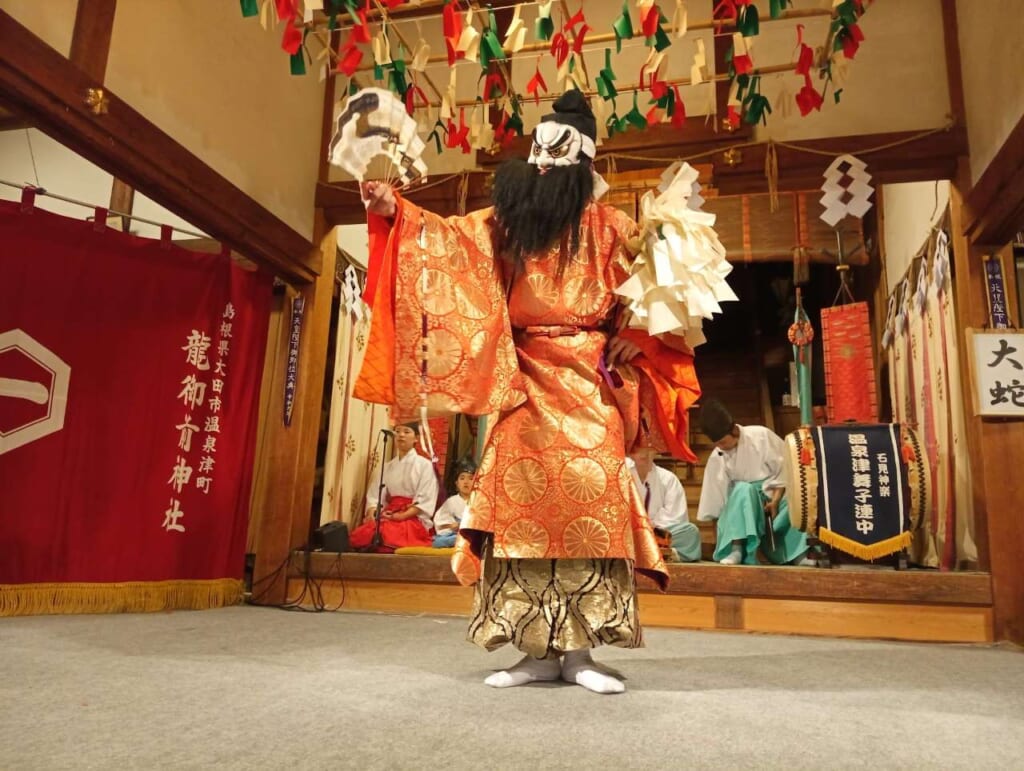
I flew to Yunotsu, Shimane Prefecture, ostensibly, for this very reason — to see kagura in the flesh, a form of theater borne out of Shinto ritual that is ancient enough to have been mentioned in the 8th century Nihon Shoki (The Chronicles of Japan). With a name that translates to “entertaining the gods,” kagura has the historical heft of noh, the light-hearted touch of kabuki, the virtuosic craftsmanship of bunraku puppet theater. But it also stands on its own merit and is so much more than the sum of its electrifying parts.
What is Kagura?
Kabuki, noh and bunraku were all undeniably critical to the evolution of Japanese performance art. To me, however, they are a bit like the British obsession with staging Shakespeare: we’re in on the act, pretending to know what the hell is going on while ultimately being baffled by the arcana of it all. Kagura, despite being a spiritual predecessor to Japan’s better-known theater styles, is much easier to interpret. Most of the stories, backed by thrumming taiko drums and pentatonic flute music, are in the classic mould of the hero’s journey. Some young shin (good guy god) answers a call to adventure, faces a hardship it looks as though they may not overcome, then thwarts the enemy to raucous applause. Sure, each story features some strangulated dialogue, a porcelain-faced character harping on about an antagonist with a quadruple-barrelled and scarcely pronounceable name, but that quickly segues into balletic battle scenes that leave little room for interpretation.
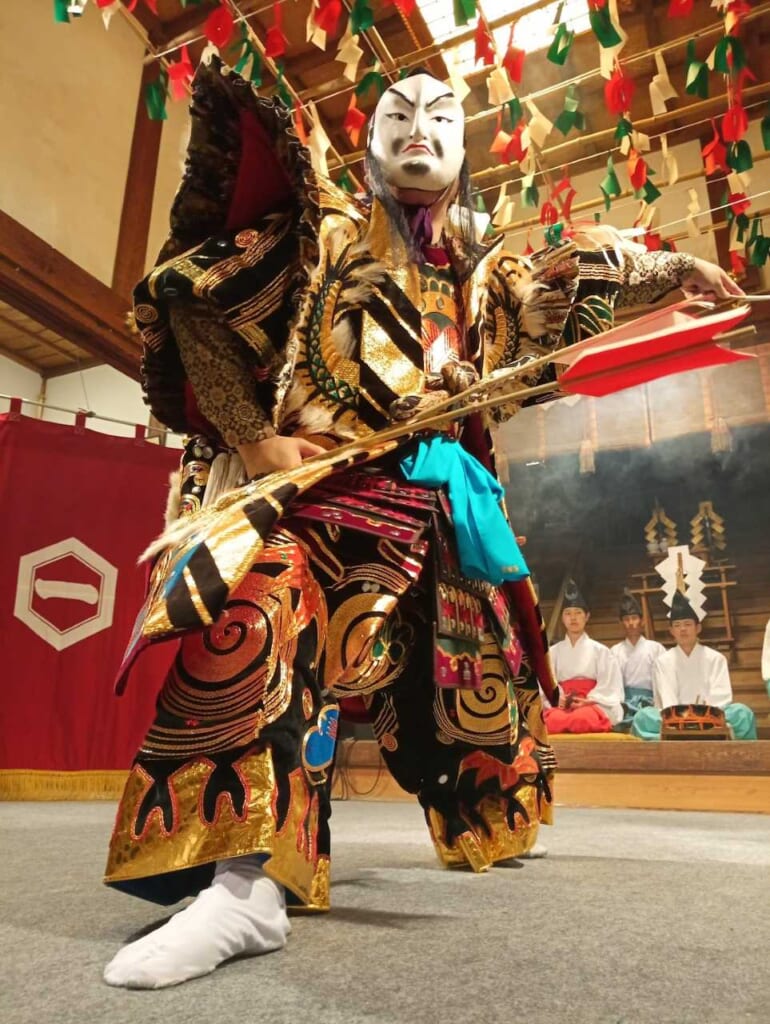
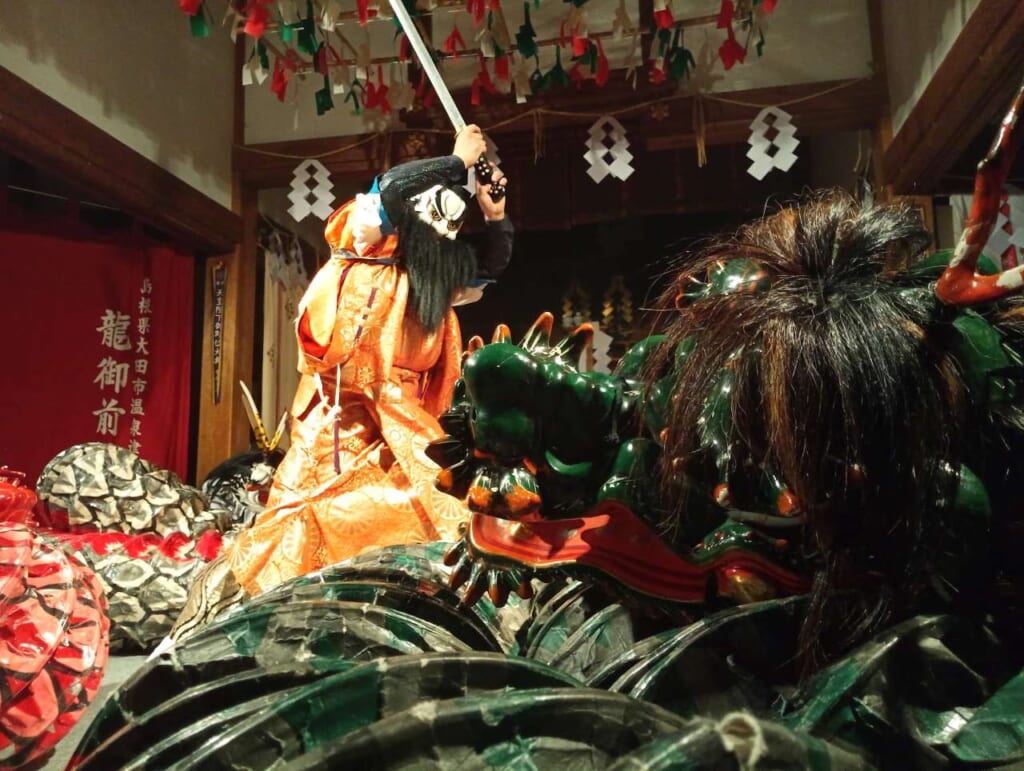
Kagura is usually performed in shrine halls, and such is the case in Yunotsu, where the local troupe performs at Tatsu-no-Gozen every Saturday evening. It’s an evocation of the people’s history in a way, when the shrine or temple courtyard functioned as the central point of social life. Many locals take part in the show, others just come along for the ride.
Kagura in Shimane Prefecture
The house at Tatsu-no-Gozen is humble, only 55 seats, but of course, this creates the intimacy. It also allows you to appreciate the level of intricacy in each glowering mask and brocaded gown. There are a reported 130 kagura troupes in this region, fittingly known as the “Province of the Gods,” which keeps the local mask artisans in business. One of whom, 44-year-old Taizo Kobayashi, has been honing his papier-mâché and painting techniques since he was 11 years old. Kobayashi is not your average craftsperson; his is not a fifth-generation business, there was no familial obligation to follow in an ancestor’s footsteps. He was simply drawn to the craft by something deep and elemental, a subconscious desire to continue a tradition that may be as old as Japan herself.
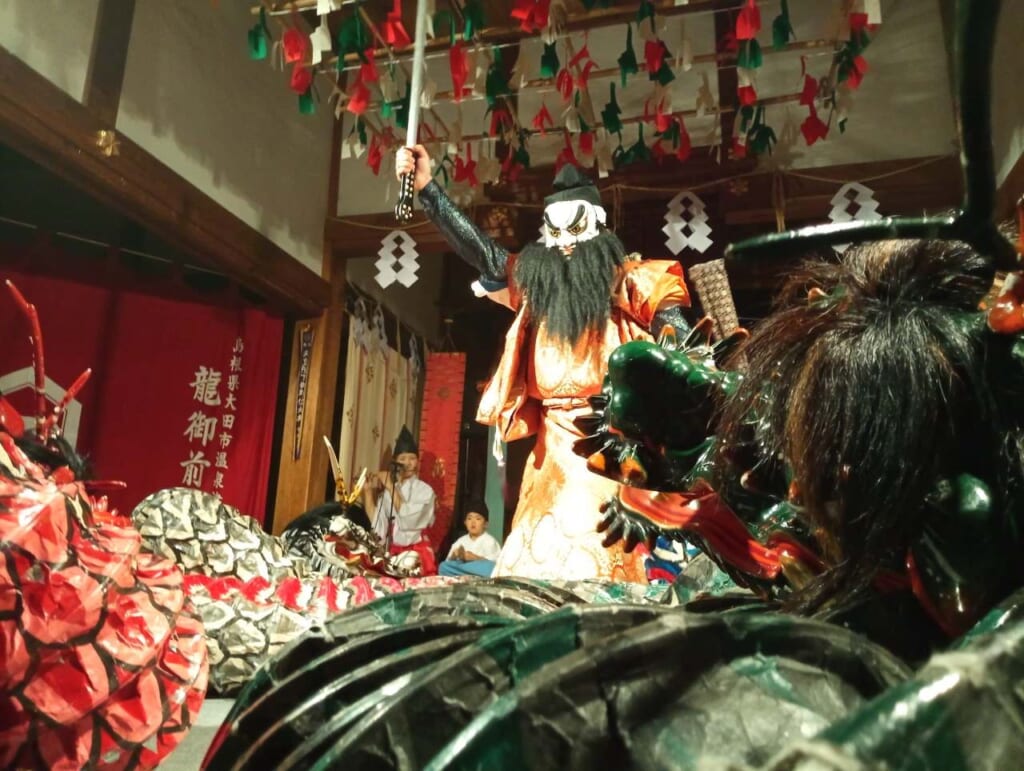
Unlike artisans in other kagura regions of Japan – Miyazaki, Saitama, Hiroshima – Kobayashi creates masks from clay moulds covered in papier-mâché and persimmon extract. An ancient technique that leaves the masks shiny as chinaware, strong as steel and unpalatable to insects. Kobayashi also writes and directs scripts for the Yunotsu troupe. The Kojiki (Records of Ancient Matters) holds the grand bible of kagura scripts, outlining 30 different tales, but Kobayashi is developing stories that speak to the mythos of his hometown, like a play about the shrine in Yunotsu, which is dedicated to water and mountain gods, who oftentimes appear as dragons.
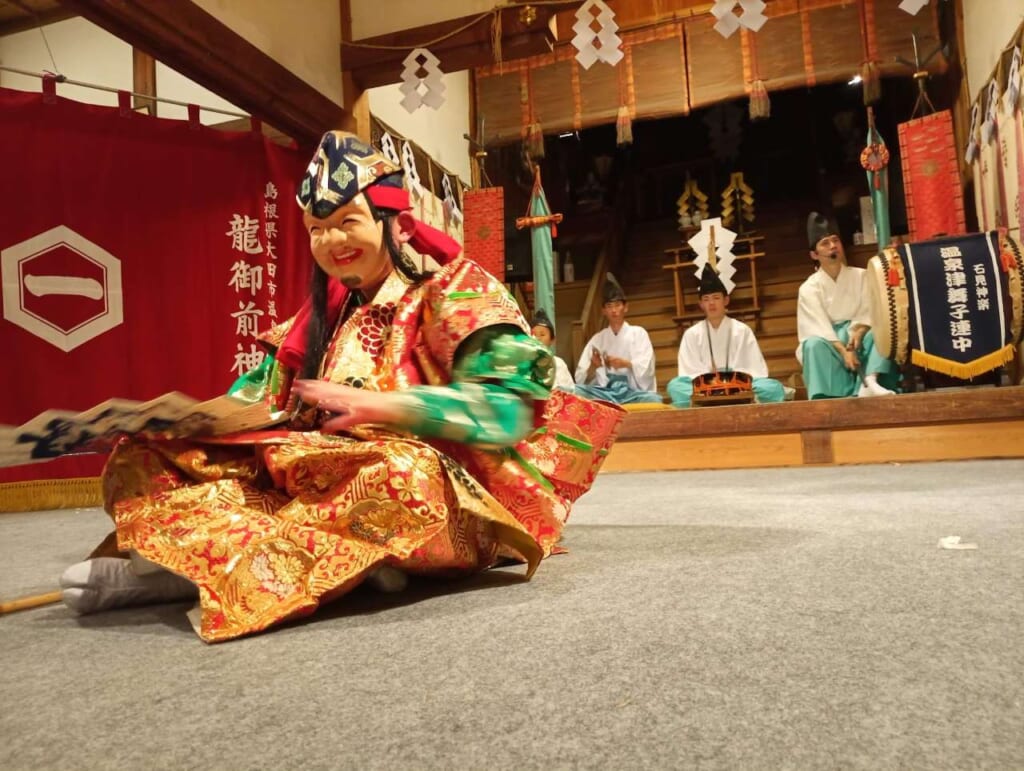
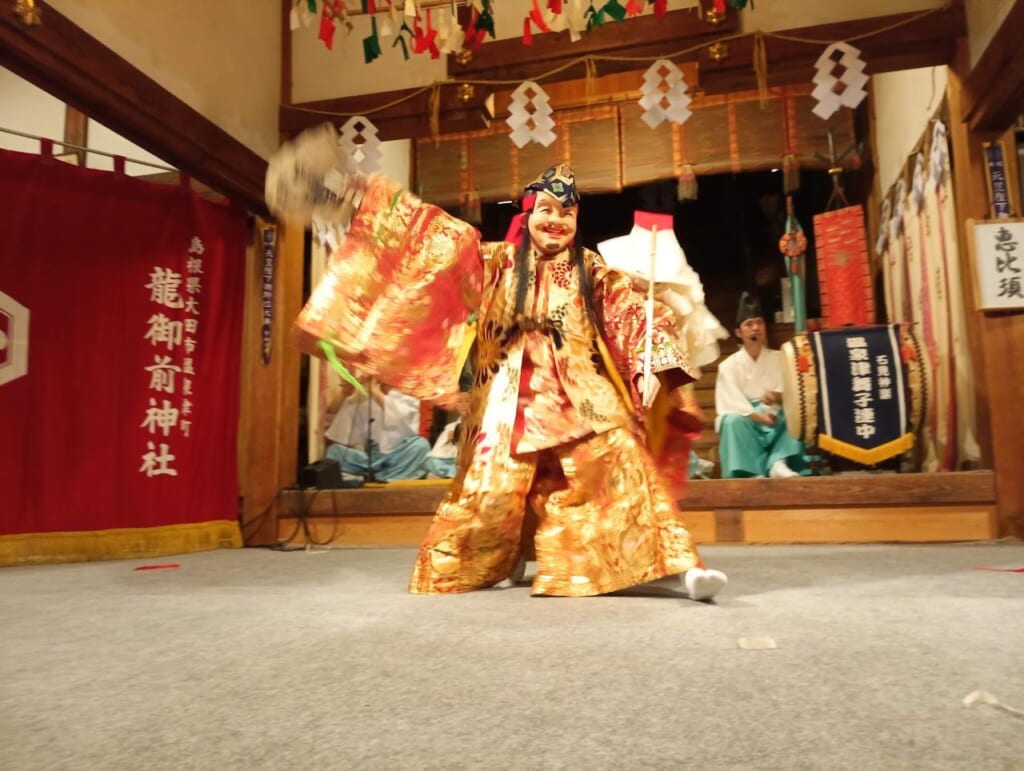
On the night I attended, I was introduced to some of the most legendary characters from Shinto lore: Sunsanoo, an impetuous god with the temperament of a stormy sea; Ebisu, the playful deity of fishermen and fortune; warriors and oni (demons) whose names are now lost to me; and, of course, the monster Orochi. The format of each story became comfortably familiar: the machi-yuki (hero’s backstory), the saguri (enemy’s backstory), the karami (confrontation), the tachi-ai (battle), and finally the ureshi-mai (victory dance). But the attendant choreography and heroics were thrillingly unpredictable.
Despite the vibrancy of the costumes and high quality of the music and performances, I couldn’t help but find it all charmingly rudimentary; a community theater effort with touches of professional polish. There were no delusions of grandeur, no over-inflated sense of self-importance, no desire to frame the work as high art. Just classic stories illuminated by their own inherent light.
While You’re in Shimane
For more stories: Head to Matsue, an old castle city about an hour along the coast by train or car, to learn about the remarkable Lafcadio Hearn. A wayfaring writer and journalist of Greek-Irish heritage, Hearn lived in Matsue at the tail end of the 19th century, where he chronicled the life, art and spirituality of commoners, and reimagined local folktales in his lucid prose style. The Lafcadio Hearn Memorial Museum and his former residence, sitting side by side on Shiomi Nawate Street, are great introductions to one of Japan’s most treasured literary imports.
For nature: Wander along the Yunotsu coast, where you’ll find striking geological features like the Hanaguri Rocks, an unusual sandstone formation once used to moor boats; the Hiso-no-Domon arch; and Kushi island, with its old castle ruins. The Kushijima Camping Ground is here, too, for those that prefer al fresco accommodation.
For winter therapy: Take a dip in one of the town’s public bathhouses. Yunotsu has been a popular onsen (hot spring) resort for more than 1,000 years, with several springs in the area. Moto-yu has two baths, both very hot, whose mineral-rich waters alleviate aches and pains.
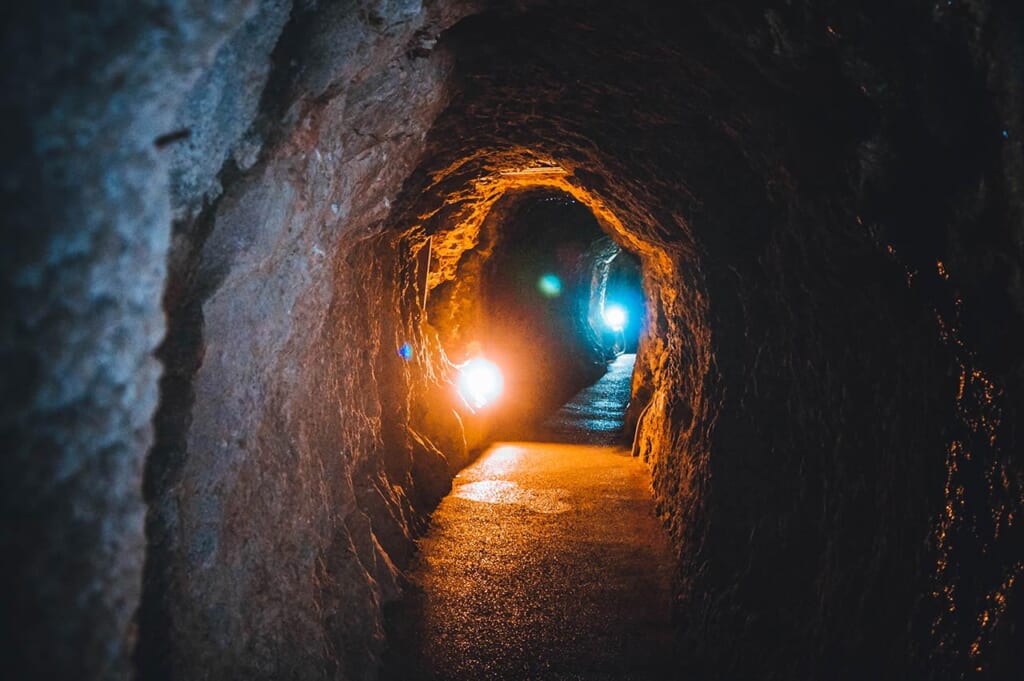
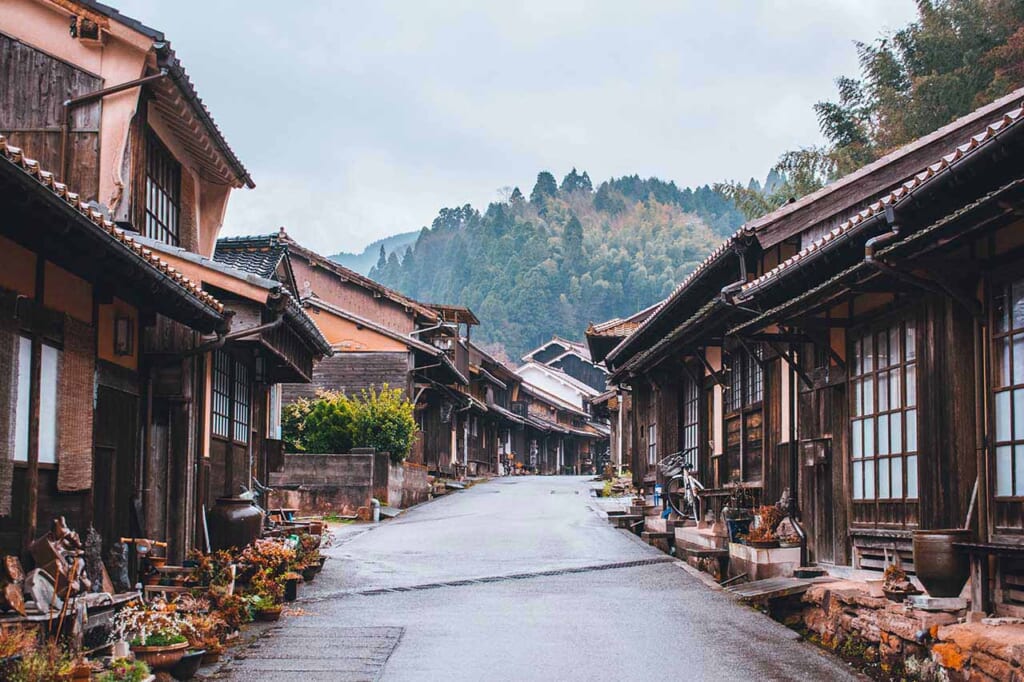
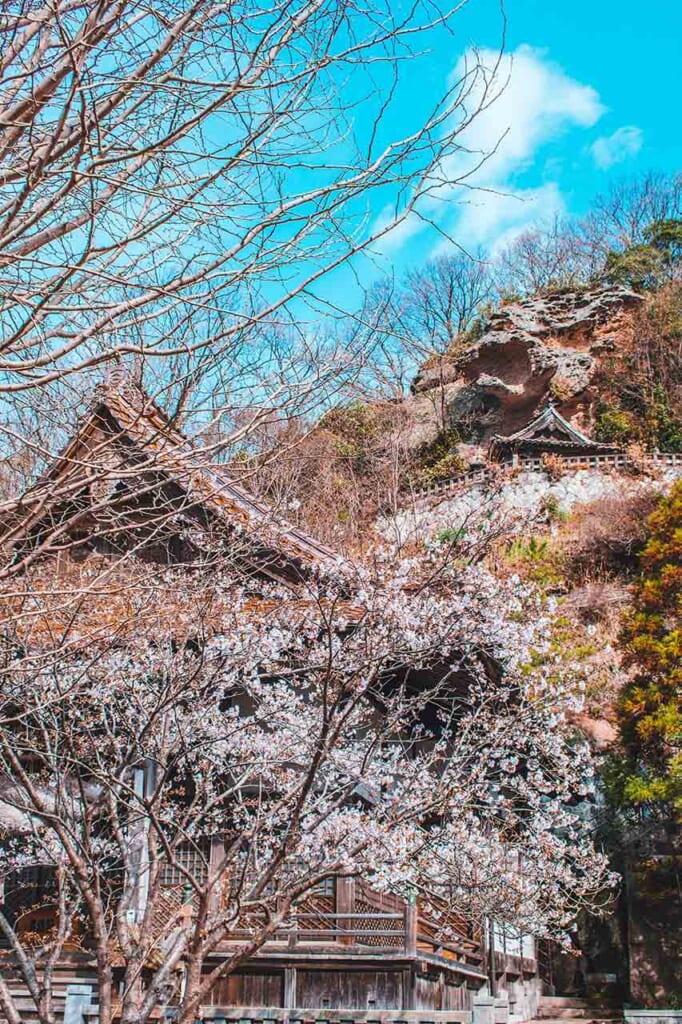
For World Heritage: Visit the Iwami Ginzan Silver Mine. Active for almost 400 years between the 16th and 20th centuries, the mine produced a third of the world’s silver during its heyday and was awarded World Heritage status in 2007.
How to get to Yunotsu Onsen Town
You can access Yunotsu Onsen town by train from the Shin-Yamaguchi shinkansen station, where you can also catch local trains. From Hiroshima, JR buses operate to Hamada taking about two hours, which are included in the Japan Rail Pass. In Hamada you change to the local JR line, which takes you directly to JR Yunotsu Station.
Yunotsu Onsen town in Shimane Prefecture and its connection to Kagura is still a hidden secret for foreign travelers, where you can explore the real Japan, see different kinds of scenery, and dive into nature. So don’t miss adding some days in Yunotsu to the itinerary of your next trip around Japan and discover the no-less impressive Iwami region.


